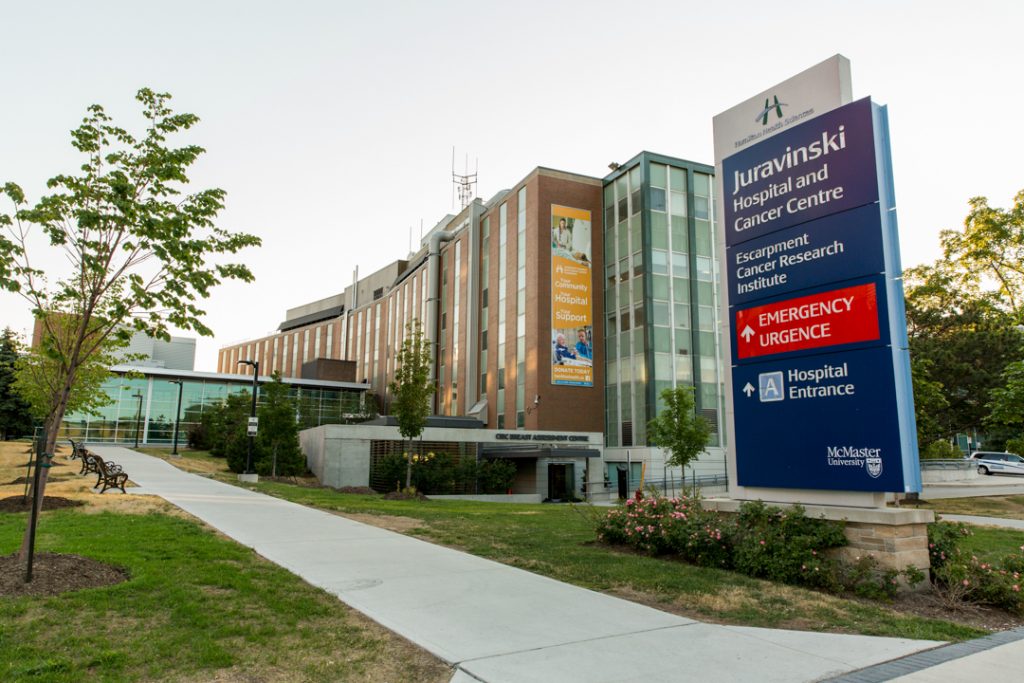
Update on hospital capacity and planning for ramp up
We’re still under strain
Yesterday, in light of a decreasing trend in the number of COVID-19 cases and hospitalizations across Ontario, the province’s Chief Medical Officer of Health issued a revision to Directive #2 outlining a gradual, cautious resumption to some hospital services previously paused. This includes: diagnostic imaging, cancer screening, scheduled ambulatory care, and non-urgent/emergent pediatric care. The requirement to continue to cease all other non-urgent and non-emergent services remains in effect.
Unfortunately, our reality in Hamilton and across our region remains highly pressured. We’re still feeling the burden of the Omicron wave and continue to see an inordinately high demand for hospital care. This week at HHS alone:
- Overall adult acute inpatient occupancy exceeded 110%, with most adult acute sites close to 120%. For context, the generally accepted “ideal” maximum occupancy for an acute care hospital is between 85-90%.
- Adult intensive care unit capacity exceeded 95%.
- Acute pediatric occupancy at McMaster Children’s Hospital is sitting at/around 100%.
- Surgical activity is proceeding at 53% of pre-pandemic volumes. 75% is the minimum activity level needed to maintain access to urgent and emergent care.
The situation is consistent across the Hamilton-Niagara-Haldimand-Brant-Burlington (HNHBB) region. As of Feb. 1:
- Regional adult acute occupancy is 105%.
- Intensive care unit capacity is 90%.
- HNHBB hospitals have transferred 21 critical care patients since Jan. 1, 2022 to other regions to create more in-region capacity. We’ve enacted a shared approach to enabling transfers on an as-needed basis, focusing on patients who are the most medically suitable for transfer. Patient transfers are very challenging situations but, unfortunately, we’re left with no other option as critical care patient volumes remain high.
Provincial modelling: We’re not out of the woods yet
Yesterday, the Ontario Science Table (OST) also published its latest report outlining near-term projections for COVID-19 in the province.
Although there are many indications that the peak of the Omicron wave has passed, the OST cautions that the easing of restrictions on Jan. 31 may see hospitalization rates across Ontario continue at high levels.
Furthermore, a plateau in vaccine uptake and waning population immunity against the COVID-19 virus may lead to a resurgence of cases province-wide in late winter/early spring.
Of note, the report highlights that vaccination continues to be highly effective in preventing severe outcomes. It shows that individuals who are unvaccinated or partially vaccinated have a six-fold risk of being hospitalized due to COVID-19, and a twelve-fold risk of requiring ICU care.
Overall, the OST suggests that Ontario’s hospital will experience prolonged occupancy challenges, including in its ICUs, in the weeks and months to come.
HHS will proceed with extreme caution
Given all of this, HHS is not yet in a position to resume paused services on a significant scale. Although we have initiated ramp-up planning, we will proceed very cautiously with service resumption and will coordinate our efforts across all sites and programs. We must be confident that we can maintain access to urgent and emergent care.
